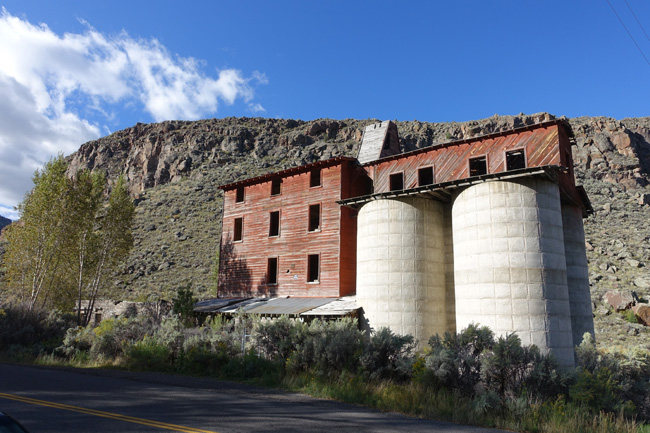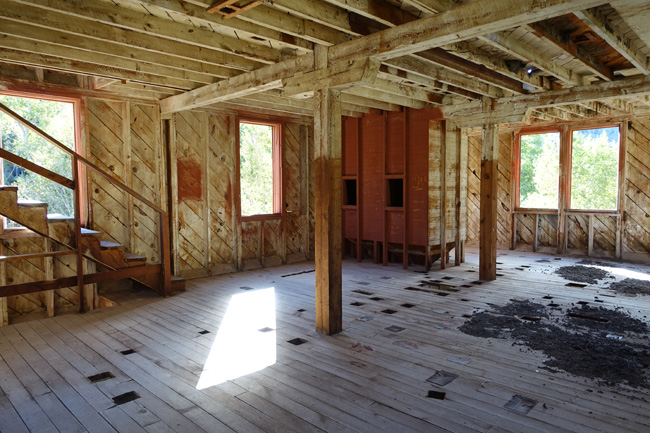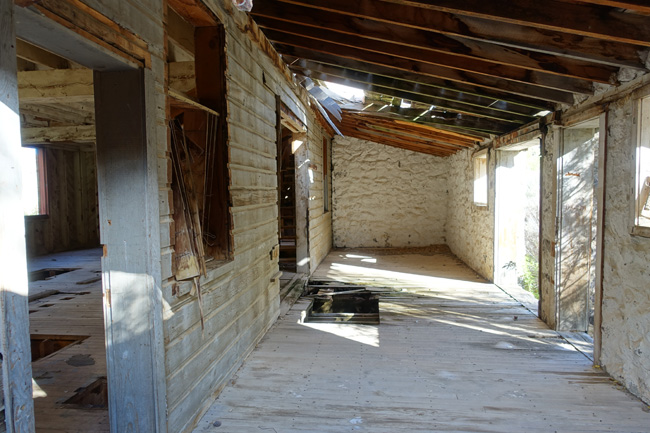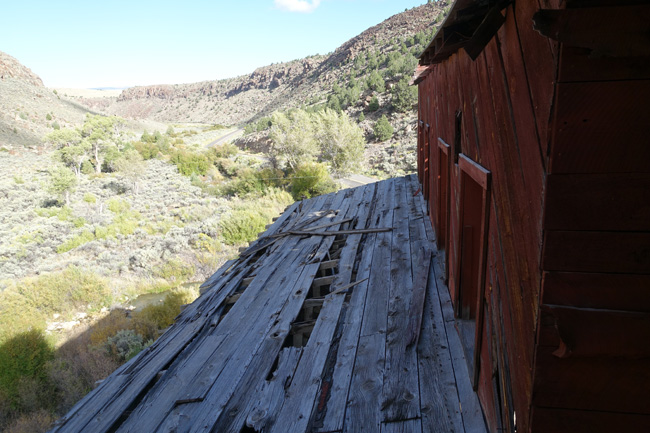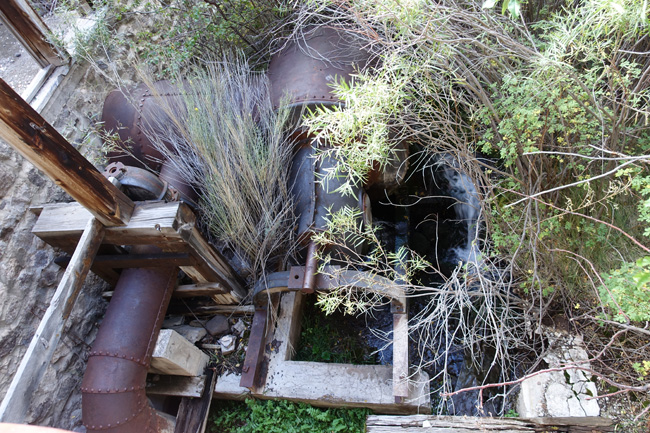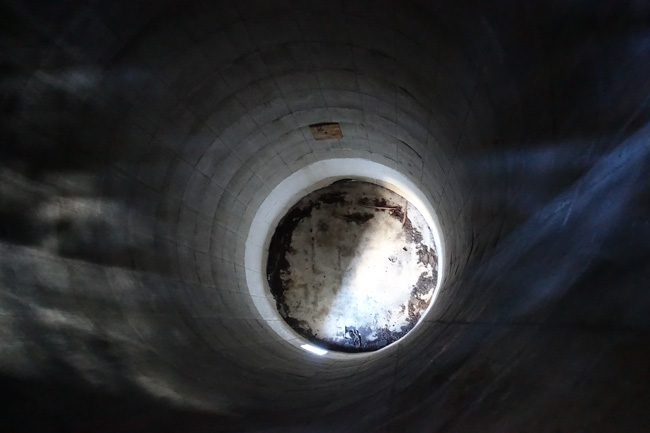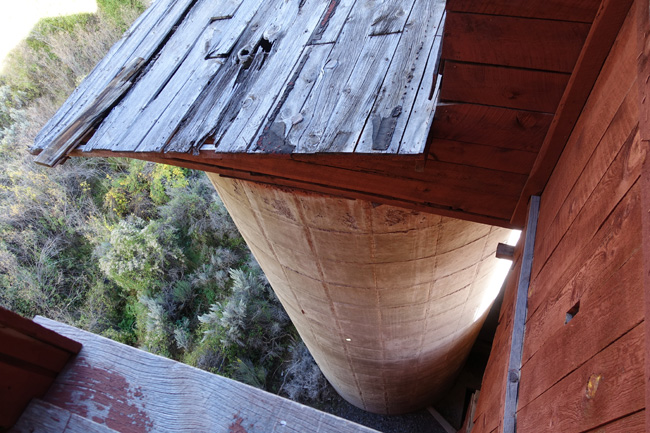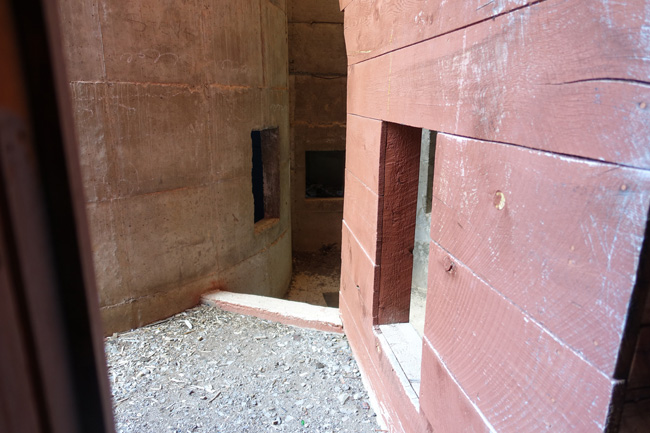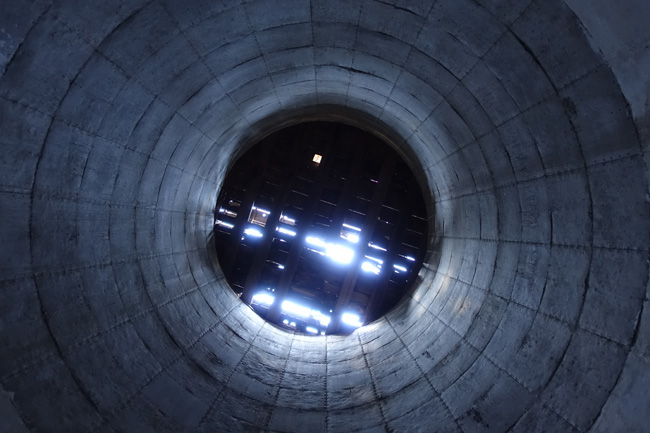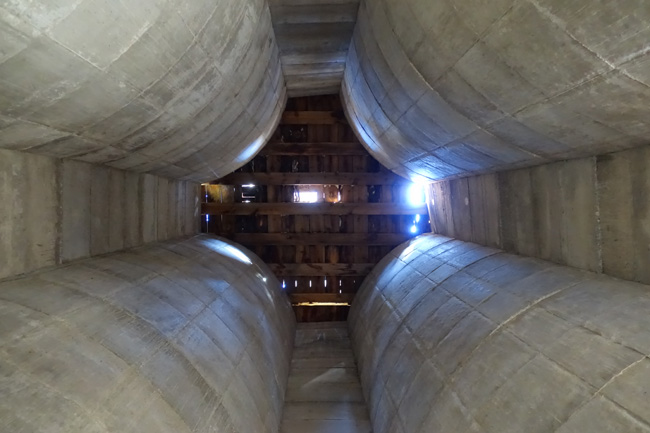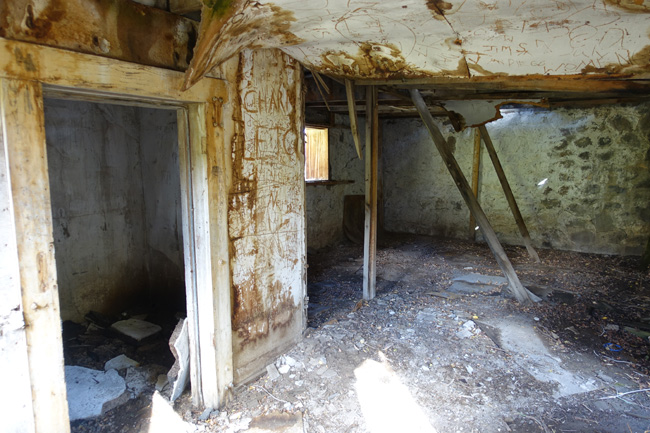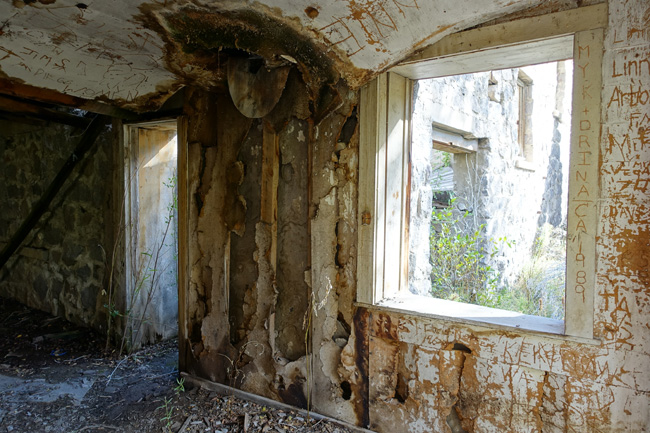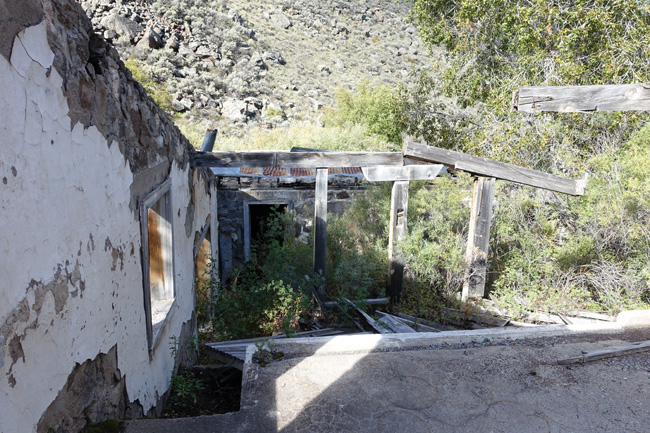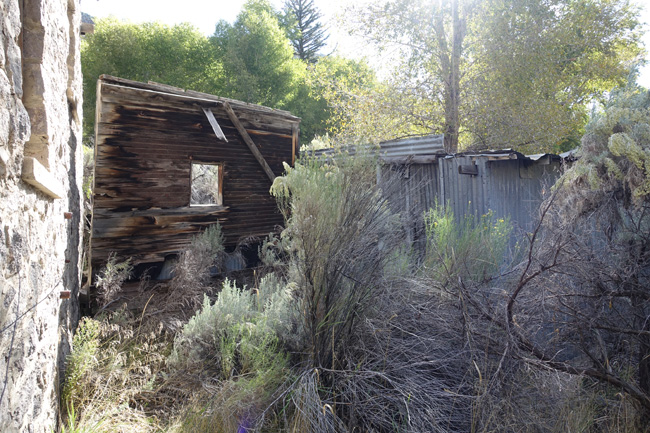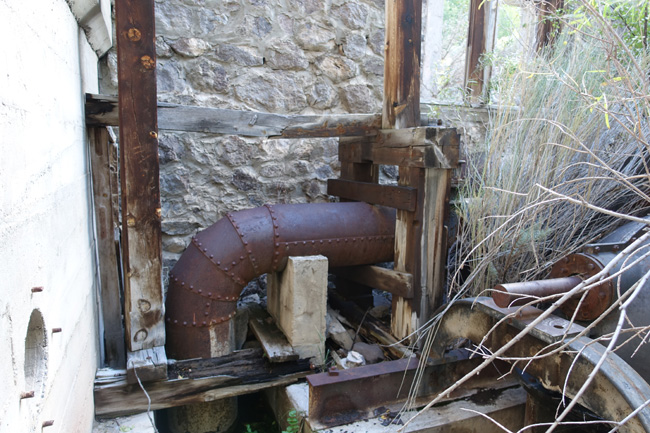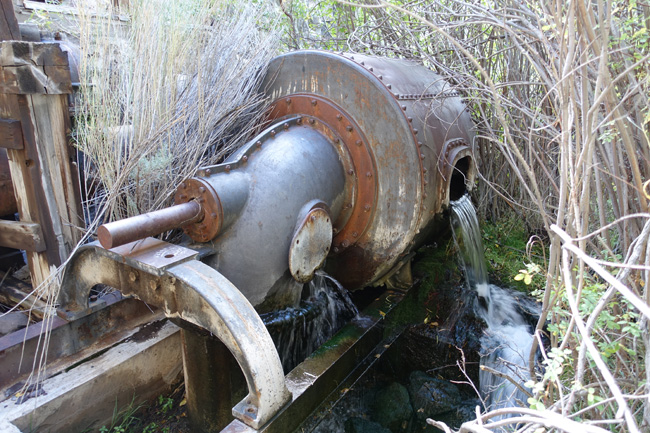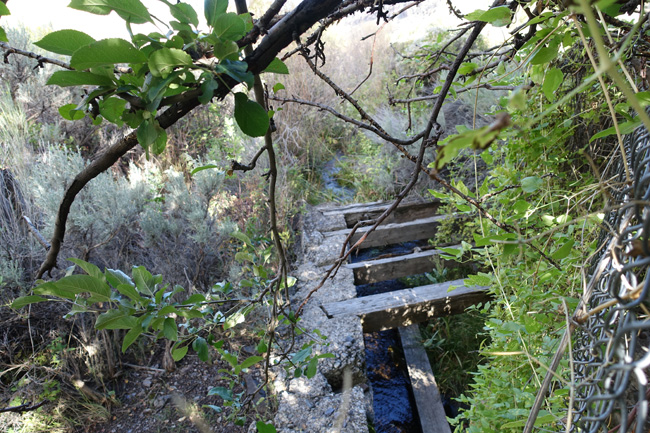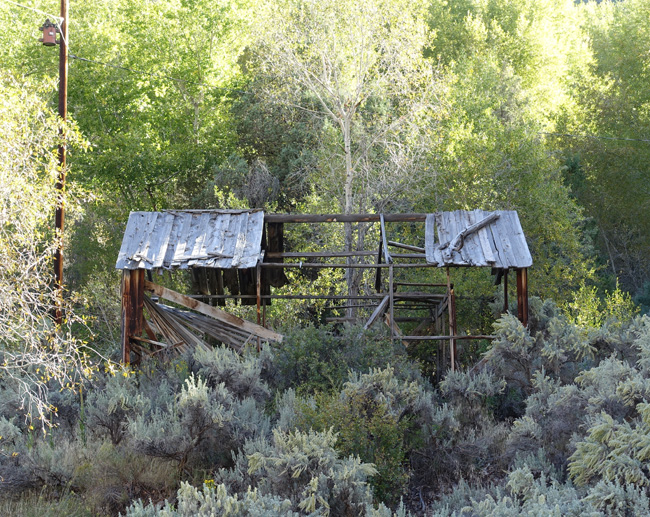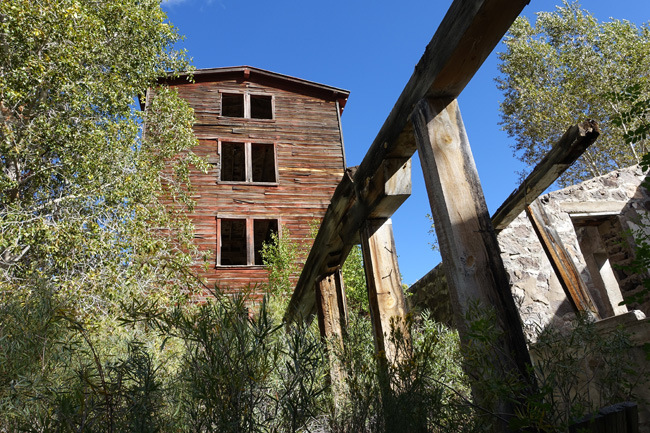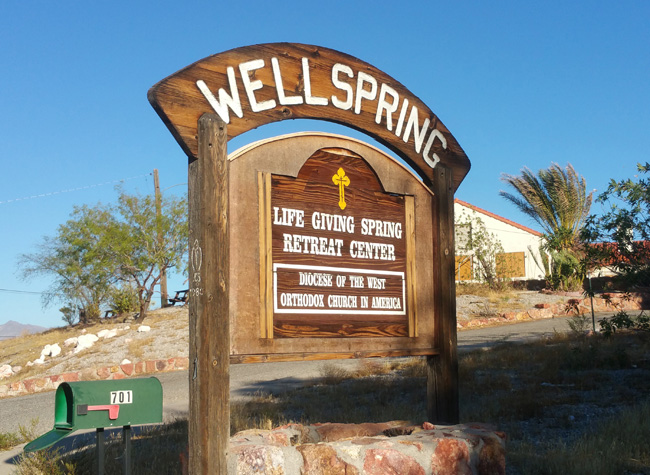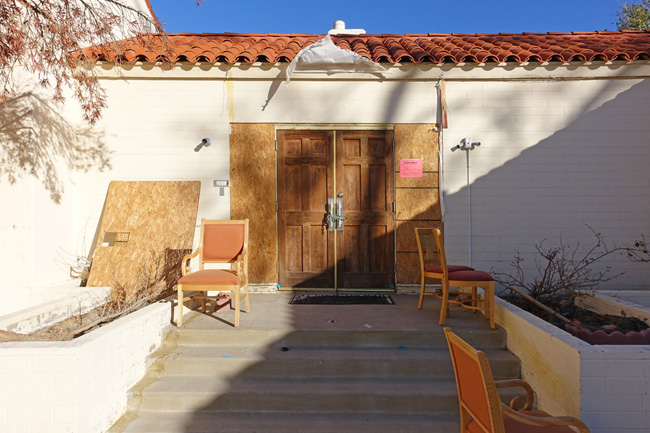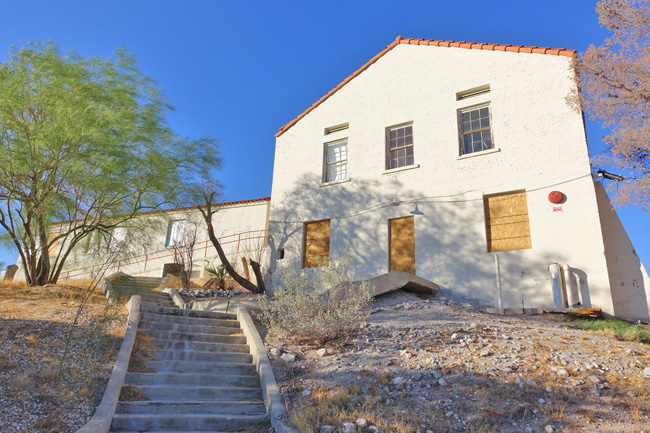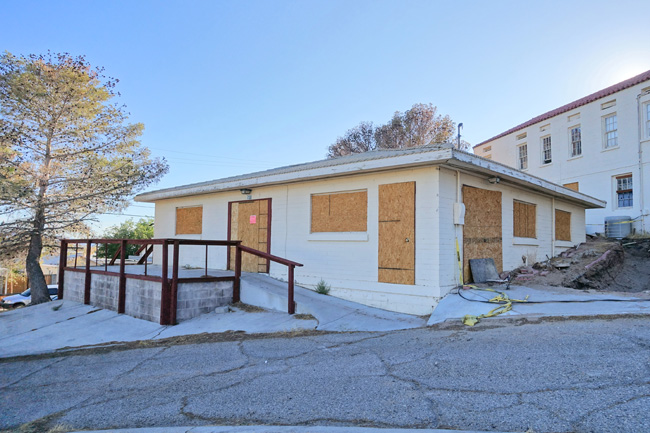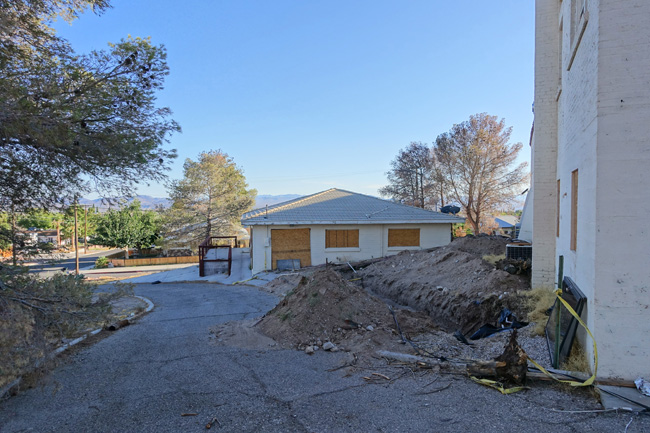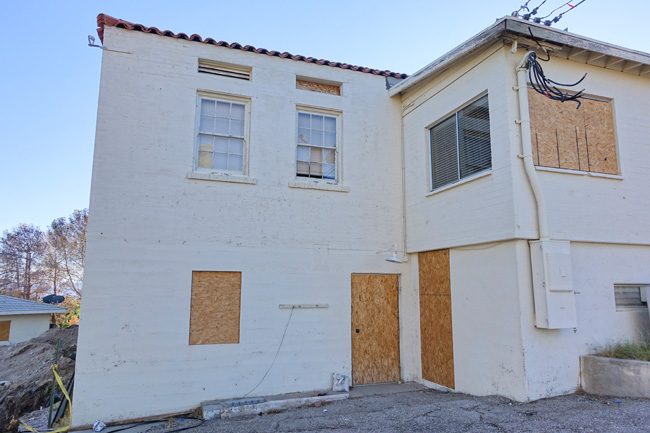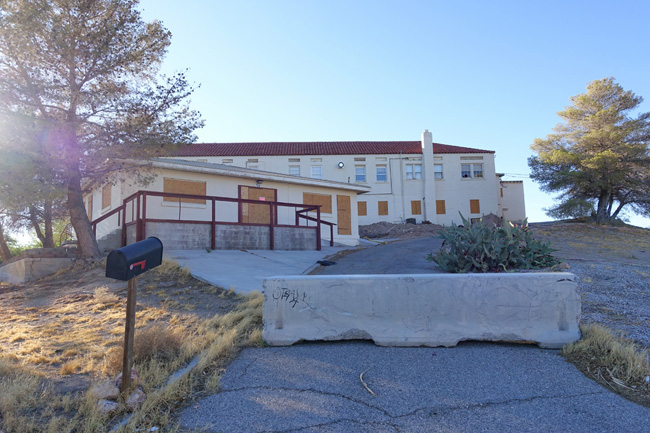I woke at sunup on day 2 of my Epic Rust Belt Road Trip. Having spent the previous day visiting an abandoned hospital, airport, and pet cemetery, I could hardly wait to get back on the road for another day of exploration.
I wended my way through the rolling hills of central Utah, awestruck by the scenery. I'd fallen in love with Utah's beautiful rock formations on my previous road trip, and now I was enjoying a whole new side of the state that I hadn't seen before.
About 8 miles south of Antimony, along a winding country road, I came to the magnificent towering structure of Osiris Creamery and Granary.
[Note: Osiris Creamery is on private property and must not be accessed without permission from the owner]
The granary portion of the building was relatively clean and free of debris. Its thick wooden beams had held up well in the century since it had been built. The stairs and flooring were mostly in solid shape, so I felt safe exploring every level.
I did have to watch my step though, because there were a few sizable holes in the floor.
No equipment remained inside, but there were quite a few chutes and other inner workings that gave an idea of how the place might have functioned back in its day.
The top story is a narrow room with windows all around.
The view of the surrounding countryside was spectacular.
I also had a good view of the rusty equipment that remained in the ruins of the adjoining creamery.
I peered down through holes in the floor to the vast emptiness of the silos below.
Then I carefully edged out onto the roof.
At the apex was a collapsing wooden tower that I dared not enter.
I descended to the basement and got a look at the silos from ground level.
Behind the property a sprawling field of dense brush is kept at bay by a cyclone fence, leaving a narrow yard that seemed like a perfect spot for a picnic.
Stringy plant life flows through a basement window frame.
I gazed up at the empty windows above.
In the back corner of the property sits a decrepit little shack with an old stove rusting behind it.
The inner walls of the little shack are very weathered and covered in markings left by years of visitors. On the ceiling in the picture below, you can see that someone has carved "Jim S." I promise I'm not the culprit; I adhere to a strict "leave no trace" policy.
The ceiling is completely gone. A layer of flaking white paint remains on a few of the stone and mortar walls.
A few sun-bleached wooden beams stand amid the thick weeds that blanket the floor.
The creamery still contains one notable piece of equipment.
A constant stream of water flows from a large metal tank. The sound is incredibly peaceful.
The water passes beneath the stone wall,
and is guided though a man-made channel
to form a stream behind the property.
Later, W. E. Holt arrived from the nearby town of Widtsoe. He and his family built a house and a creamery. The grain mill and massive silos were added later. For unknown reasons, Holt renamed the town Osiris, after the Egyptian god of the afterlife.
The ruins of the Holt family home still remain across the street from the creamery.
The brambles were thick and impassible and I hadn't brought a machete, so I was unable to get a closer look.
Harsh weather and and insufficient water made farming prohibitively difficult. After a decade of struggle, the Holt family abandoned the settlement in the 1920s.
The Osiris Creamery and Granary was an awesome way to start the morning, but the day had plenty more incredible places in store for me. Come back next week for pictures and stories from the ghost towns of Antimony and Junction, Utah.
If you enjoyed this article, please feel free to share it on Facebook. While you're at it, please subscribe to Places That Were and follow me on my social media sites:
Facebook: http://www.facebook.com/placesthatwere
Google+: https://plus.google.com/u/0/+JimSullivanPlacesThatWere/posts
EyeEm: https://www.eyeem.com/u/placesthatwere
flickr: https://www.flickr.com/photos/placesthatwere/
Twitter: https://twitter.com/placesthatwere/
Youtube: https://www.youtube.com/jimplicit
Instagram: http://instagram.com/theplacesthatwere
Tumblr: http://placesthatwere.tumblr.com/
Thank you!
